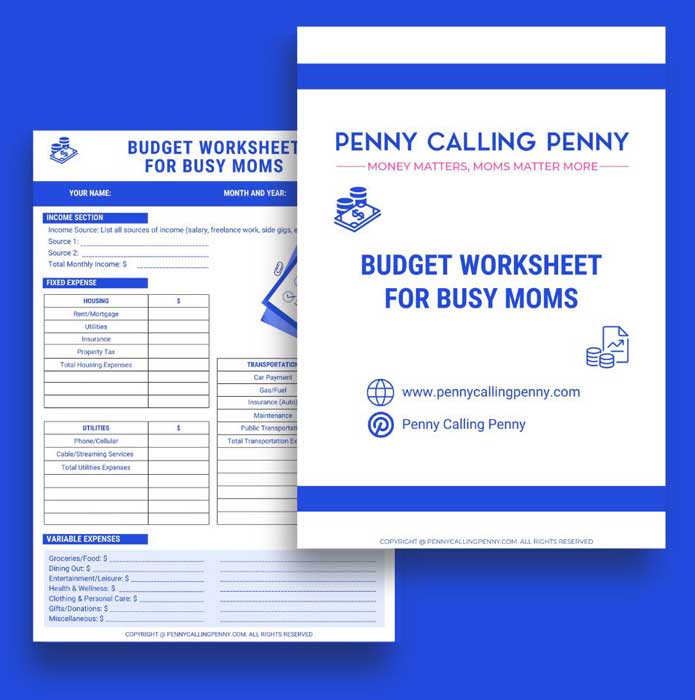
The US government provides grants for single moms to help lessen the burden of rent, utility bills, housing, childcare, medical bills, and other necessary expenses.
If you’re a single mom needing financial assistance, we have compiled a list of 25 available grants you can take advantage of.
25 Helpful Grants For Single Moms In 2024
For the sake of this blog, I have grouped the available grants for single moms into four categories:-
- Government Assistance Grants For Single Moms
- Housing Grants For Single Moms
- Education Grants For Single Moms
- Child Care Grants For Single Moms
Let’s take a look at the available options under each category.
Government Assistance Grants For Single Moms
Below are some of the available welfare grants for single moms.
1. Supplemental Nutrition Assistance Program (SNAP)
SNAP (Supplemental Nutrition Assistance Program), formerly known as the Food Stamp program, assists single mothers with low income or who have medical expenses that force them to make difficult choices about food.
Some single moms cannot afford to buy food if they pay for medical care.
Or if they purchase food, there won’t be any money left over for housing or even critically needed medical care.
By providing low-income individuals and families with food benefits, SNAP can assist in finding a solution to this problem.
It is one of the most crucial parts of the safety net in the United States.
SNAP is now the only source of income support for many of the poorest Americans.
2. Women, Infants, And Children Program (WIC)
WIC is a federally-funded nutrition program that distributes free healthy foods to pregnant women, new mothers, and children under five years of age who are considered “at nutritional risk.”
It is intended to be a short-term program, with eligible recipients typically receiving benefits for six (6) months to a year before reapplying.
Women in the program typically receive $11 per month for fresh fruits and vegetables, while children receive $9 per month.
3. Temporary Assistance For Needy Families (TANF)
TANF is a critical component of the safety net for very low-income families.
Its primary goal is to assist these families in achieving self-sufficiency through short-term financial assistance and employment opportunities.
The TANF bureau helps families figure out how to become self-sufficient.
TANF assists single mothers with children to remain in their homes.
The organization also promotes two-parent families and works to prevent pregnancies outside of marriage.
TANF also has single-mother programs that help clients find and keep jobs to reduce their reliance.
TANF grants are classified as “child-only” or “family” grants.
Child-only grants, designed to address only the child’s needs, are typically smaller than family grants, averaging around $8 per day for one child.
The second TANF grant you may be eligible for is a “family grant.”
It is widely regarded as the easiest to obtain.
It pays a small monthly cash for food, clothing, shelter, and other necessities for up to 60 months, though many states have shorter time limits.
4. Medicaid
Medicaid offers medical benefits to qualified families whose financial situation would be classified as low-income or very low-income for those without health insurance.
Medicare and Medicaid are not the same.
Medicare covers medical services for people 65 and older and the disabled, whereas Medicaid is for the underprivileged.
Even if you’re unemployed and a single mother who meets specific income requirements, Medicaid may be the best option for you to get the critical medical care you need.
Within the confines of federal regulations, each state runs its own Medicaid program, with varying eligibility requirements that are higher or lower depending on the state.
If your state is expanding Medicaid, your income must be less than 138% of the federal poverty level or $30,300 annually for a single mother with children.
5. Telephone Services Discount For Single Moms
Although it appears that everyone has the latest smartphone technology, the truth is that some people cannot afford even a basic landline telephone.
Because having access to a phone is essential, the federal government established the Lifeline program to assist people with phone service.
For qualified customers who use a wireless or landline telephone, the program offers a $9.25 monthly service charge discount.
Some local phone service providers provide additional discounts.


6. Weatherization Assistance Program (WAP)
The Weatherization Assistance Program (WAP) of the United States Department of Energy (DOE) provides funding to states, territories, and some Indian tribes to improve the energy efficiency of low-income families’ homes.
These governments, in turn, contract with local governments and nonprofit organizations to provide weatherization services to those in need, utilizing cutting-edge home energy improvement technologies.
Priority is given to the elderly and families with children in most states.
Income is one of the most critical factors influencing eligibility.
If your income is less than 200% of the poverty line in your state, you may be eligible for weatherization.
7. EITC Grants For Single Moms
Those with low incomes may be able to keep more of their earnings.
The EITC allows the government to reduce tax liability through a tax credit.
Anyone interested in the EITC must be on social security and have earned income in the previous year.
To be eligible, the child must have a social security number.
They must also be a son, a daughter, a sibling, a step-sibling, a niece, a nephew, a grandchild, adopted, step-parented, or foster.
Furthermore, if you are a full-time college student, the child must be younger than you on the last day of the year and under the age of 19 or 24.
They must live with you for half the year and cannot file taxes on behalf of anyone else.
In addition to the income requirements, you cannot have more than $3,300 in investment income.
Aside from that, you must file your taxes as “married filing jointly,” claim as a qualifying child or claim foreign income.
8. Unemployment Insurance Grant
The Department of Labor offers weekly compensation to unemployed people who lost their jobs through no fault of their own, including those who lost their jobs directly or indirectly due to the pandemic.
These benefits assist out-of-work single mothers who are struggling to make ends meet by temporarily replacing a portion of their wages while they look for work.

Download our free printable because guessing where your money went never worked for anyone!
(By subscribing, you agree to our terms & conditions, privacy policy, and disclaimer.)
Housing Grants For Single Moms
Below are the available housing grants for single moms.
9. Vision Of Grace Transition Homes
Grace Transition Home’s Vision is to assist single mothers by providing low-cost or free housing and assistance with the transition to independent housing.
All families are treated with dignity and respect.
The Vision of Grace Transition Home is a non-profit organization that helps homeless families in the Montgomery, Alabama area.
The charity provides a three-bedroom single-family home with a small maintenance fee.
Local Churches, faith groups, and established service agencies identify and refer the families chosen to participate.
10. Chenoa Fund
The CBC Mortgage Agency offers the national down payment assistance program known as the Chenoa Fund.
CBC Mortgage Agency aims to increase the number of creditworthy, low- and moderate-income people who can afford a home.
People with a FICO score of 620 or higher offer up to 3.5% down payment assistance.
If you make mortgage payments on time for 36 months and your income is less than 115% of the median income in your neighborhood, the loan is forgiven.
You must pay the downpayment assistance if your income exceeds 115% of the median income in your area.
11. HUD (Housing And Urban Development) Grant For Housing Assistance
HUD funds organizations and groups across the country.
As a result, they use this money to build housing and assist those unable to support themselves.
Many funds are available to organizations and groups.
These funds are listed in a database called SuperNOFA.
However, only organizations and groups that specialize in assisting people in a community in their search for safe, healthy housing are eligible to apply.
As a result, the grant amount is determined by the grants and the organization or groups that require it.
Then, HUD will assess the community’s financial needs and work with the organization/group to determine how much money they should receive.
12. Section 8 Assistance For Mortgage
The government has funds to assist families, seniors, and people with disabilities in affording a safe place to live.
Furthermore, the funds can purchase a single-family home, townhouse, or apartment.
Those receiving Section 8 assistance can thus choose where they live.
However, housing must be a contributing factor.
On the other hand, those needing housing assistance must schedule an appointment with their local public housing agency (PHA).
Each PHA decides how much money families, seniors, and people with disabilities receive for housing.
Most agencies require applicants’ incomes to be no more than 50% of the median income in their community.
However, this program is only available to US citizens and those with valid immigration status.
13. Public Housing Program
The program generally serves families with incomes up to 80% of the median income for the county or metropolitan area where they choose to live, though this varies by region.
To apply for public housing, you must first contact the local housing authority (HA) in the city or town where you intend to live.
If the HA decides you are eligible, your name will be added to a waiting list.
14. ADDI Grant For First-Time Home Buyers
Down payments and closing costs are the two most challenging obstacles for people looking to buy a home.
As a result, ADDI assists first-time homebuyers by paying for the down payment or closing costs.
One first-time home buyer may be eligible for ADDI assistance.
The money awarded, however, must be used to buy a house, condominium manufactured home or cooperative unit.
Those eligible for the ADDI must have an income that is less than 80% of the area’s median income.
Each home buyer’s income, down payment, and closing costs determine the amount paid by each home buyer.
Education Grants For Single Moms
15. Federal Pell Grant
The most extensive student aid program in the country is the Pell Grant.
The neediest students can receive grants worth up to $6,495 to help pay for college.
Nearly 7 million students nationwide received Pell grants totaling over $28 billion in 2019 alone, with almost 60% of Black students and 50% of Latinx students receiving these grants.
One way for single mothers with limited resources to “go back to school” and rejoin the workforce is through this need-based grant.
Furthermore, it is gratuitous money that is not owed.
16. Federal Student Loan
Student loans, whether subsidized or unsubsidized, are frequently provided as part of a comprehensive financial aid package for single mothers who are “going back to school” and require more support than what is provided by the Pell grant.
Federal student loans offer you the opportunity to borrow money for college at lower rates than most private loans, despite being the least desirable type of financial aid.
Additionally, you can postpone interest payments until after graduation.
17. Federal Work Study Grant
A federally funded financial aid program called Federal Work-Study (FWS) enables single-parent students to make money by working part-time on or off campus, frequently in the area of study that they have chosen.
Students can work up to twenty (20) hours per week and are paid monthly based on their hourly rate, which they can use to pay for their tuition.
This “earn while you learn” option will only be practical if your living expenses are low and your family is willing to help with child care.
18. Teacher Education Assistance For College And Higher Education Grant
If they meet the program’s requirements, the TEACH grant can provide eligible students who want to become teachers with financial assistance of up to $4,000 annually.
Students who receive the grant are required to “repay” it by working as teachers in high-need fields at educational institutions that cater to children from low-income families.
You can inquire about the TEACH Grant Program’s participation with the university or college where your child is enrolled.
19. Academic Competitiveness Grant (ACG)
Academic Competitiveness Grants (ACG) and National Science and Mathematics Access to Retain Talent (National SMART Grants) assist students, including single mothers, in excelling in maths and science.
As a result, the grant aims to persuade students to take more challenging courses in high school to be more successful in college.
It is also hoped that these grants will encourage students to pursue careers in the most challenging fields, such as technology, engineering, mathematics, science, and foreign language.
All grant recipients receive $4,000 annually to cover tuition and other school-related expenses.
This money, however, has no bearing on other states’ or federal grants received.
Both of these grants are competitive, but students interested in the disciplines, as mentioned earlier, should apply if they are eligible.
Child Care Grants For Single Moms
Below are the available child care grants for single moms:-
20. Head Start
Head Start and Early Head Start are federal initiatives created to support young children from birth to age five to become “school ready.”
Children in Early Head Start programs are aged 0 to 2 years old, while those in Head Start programs are aged 3 to 5.
Family income must be at or below the poverty line to qualify.
The presence of foster children, homelessness, or receipt of specific forms of public assistance are additional factors that can affect eligibility. Women who are expecting may also be qualified for Early Head Start.
It offers a wide range of services, including parental involvement in the family, free medical and dental care, child education, health and nutrition, and even child and adult education.
21. Child And Adult Care Food Program (CACFP)
The Child and Adult Care Food Program (CACFP) is a federal initiative that reimburses eligible children and adults enrolled in childcare facilities, daycare facilities, and adult daycare facilities for wholesome meals and snacks.
Additionally, the CACFP reimburses meal providers for feeding children and teenagers in after-school programs, kids staying in shelters, and seniors or people with disabilities who are enrolled in daycare centers.
Young children and adults in the United States benefit from the wellness, healthy growth, and development that the CACFP promotes.
22. Child And Dependent Care Program
A federal tax break known as the Child and Dependent Care Credit assists families in paying for childcare costs incurred while working or looking for work.
Families who are required to pay for the care of an adult dependent or a spouse who is disabled may also be eligible for the credit.
The number of children or dependents in care, your family’s income, and the total amount your family spent on care during the year determine the size of the Child and Dependent Care Credit.
23. Social Services Block Grant (SSBG)
A variety of social services are offered to low-income communities through the Social Services Block Grants (SSBG) program.
Typical services include adoption agencies, daycare facilities for kids or adults, independent living counseling, employment opportunities, and more.
Each state has different service categories and eligibility standards for individuals.
States and territories can adopt social service programming to the needs of their populations thanks to the Social Services Block Grant (SSBG), a flexible funding source.
States deliver vital social services through the SSBG to help people stay in their homes or find the best institutional settings, among other objectives, such as reducing dependency and, promoting self-sufficiency, safeguarding children and adults from abuse, neglect, and exploitation.
24. Children’s Health Insurance Program
Children (up to age 19) without health insurance in families with incomes too high to be eligible for Medicaid but unable to afford private insurance are covered by CHIP.
Most children with low incomes are covered by Medicaid, which currently has over 37.5 million beneficiaries, and CHIP, which has another 9.6 million beneficiaries.
It covers all children’s medical, preventative, dental, and vision needs.
It’s free for most families. Others will cover some services through co-payments, enrollment fees, and low monthly premiums.
Like Medicaid, CHIP is managed independently by each state, with its own rules.
It can be run as a separate program, an extension of Medicaid, or a hybrid.
25. Special Education Parent Training And Information (PTI) Centers Program
Single mothers with disabled children can benefit from the Special Education Parent Training and Information (PTI) Centers Program.
They receive assistance in meeting the child’s academic and independent living needs.
To apply, select one of three program administration centers: community parent resource centers, parent training, and information centers, or technical assistance for parent centers.
Pick Your Next Read:
- 15 Helpful Grants For Single Moms In Texas
- 10 Grants For Single Moms In Pennsylvania
- 15 Grants For Single Moms In Florida
- 10 Grants For Single Moms In North Carolina
- 10 Grants For Single Moms In Ohio
- 33 Business Grants For Black Women
- 13 Helpful Grants For Single Moms In Arizona
- 10 Grants For Single Moms In Michigan
- 12 Grants For Single Mothers In California
- 10 Helpful Grants For Single Moms In Missouri
- Best Grants For Single Moms In Colorado
- 15 Financial Grants For Single Moms In Indiana
- 10 Helpful Grants For Single Moms In South Carolina
- 14 Helpful Grants For Single Moms In Illinois
- 15 Helpful Grants For Single Moms In Kansas
- 21 Helpful Grants For Single Mothers In Georgia
- 13 Helpful Grants For Single Moms In Oklahoma
- 10 Helpful Grants For Single Moms In Arkansas
- 15 Helpful Grants For Single Moms In New Jersey
- 16 Best Rent Assistance Resources For Single Moms
Conclusion
Single moms often face financial pressure, which is why these grants are essential for their survival.
These grants help single moms with the following: college funds, feeding, medical bills, housing, etc.
Most grants require single mothers to have a low income and be their children’s primary caregivers.
This blog contains a list of 25 grants for single moms available today.
Subscribe to our newsletter so you’ll always be notified when a new blog drops.








